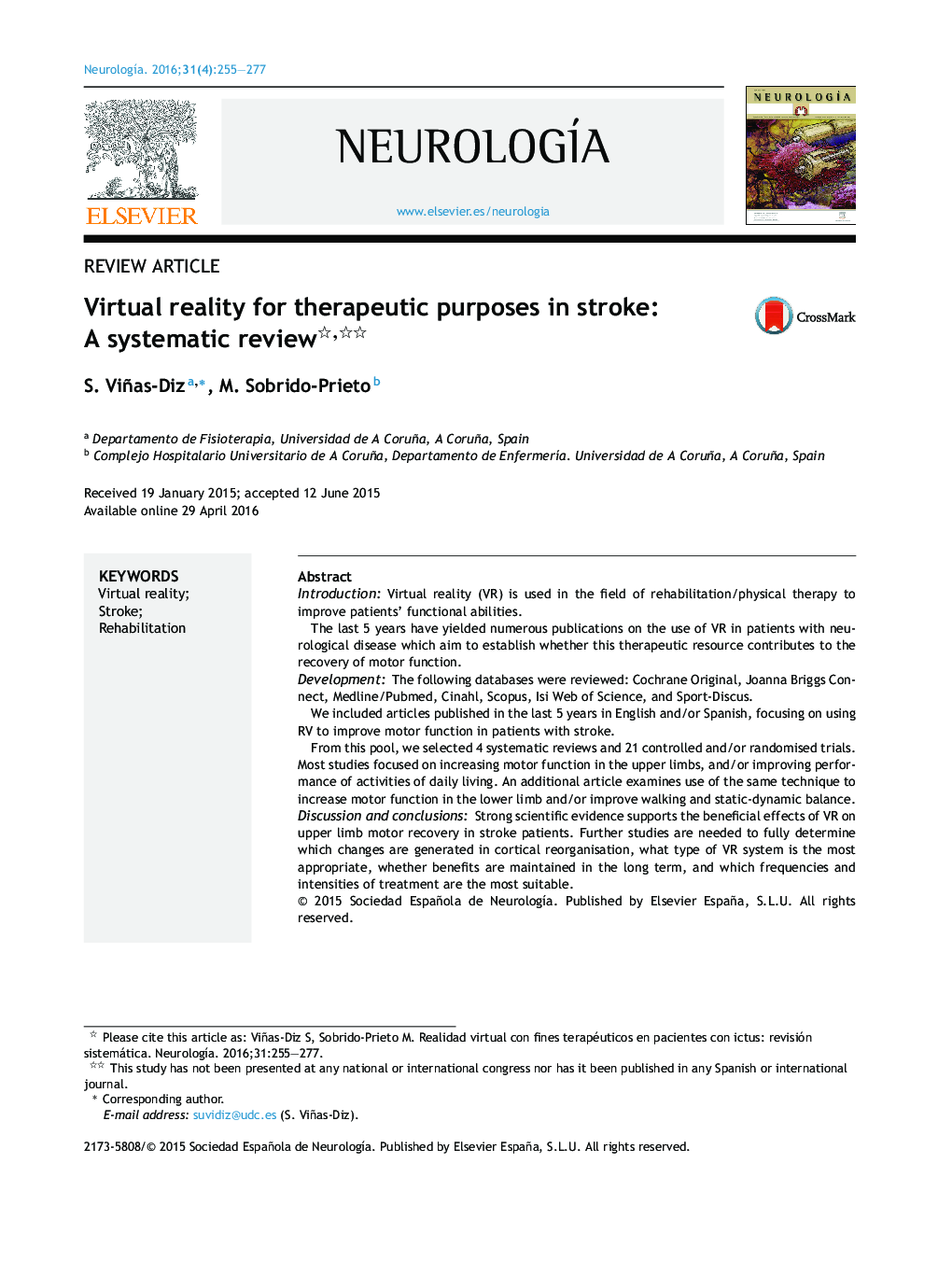| کد مقاله | کد نشریه | سال انتشار | مقاله انگلیسی | نسخه تمام متن |
|---|---|---|---|---|
| 3077056 | 1189117 | 2016 | 23 صفحه PDF | دانلود رایگان |
IntroductionVirtual reality (VR) is used in the field of rehabilitation/physical therapy to improve patients’ functional abilities.The last 5 years have yielded numerous publications on the use of VR in patients with neurological disease which aim to establish whether this therapeutic resource contributes to the recovery of motor function.DevelopmentThe following databases were reviewed: Cochrane Original, Joanna Briggs Connect, Medline/Pubmed, Cinahl, Scopus, Isi Web of Science, and Sport-Discus.We included articles published in the last 5 years in English and/or Spanish, focusing on using RV to improve motor function in patients with stroke.From this pool, we selected 4 systematic reviews and 21 controlled and/or randomised trials. Most studies focused on increasing motor function in the upper limbs, and/or improving performance of activities of daily living. An additional article examines use of the same technique to increase motor function in the lower limb and/or improve walking and static-dynamic balance.Discussion and conclusionsStrong scientific evidence supports the beneficial effects of VR on upper limb motor recovery in stroke patients. Further studies are needed to fully determine which changes are generated in cortical reorganisation, what type of VR system is the most appropriate, whether benefits are maintained in the long term, and which frequencies and intensities of treatment are the most suitable.
ResumenIntroducciónLa realidad virtual (RV) se utiliza en rehabilitación con el objetivo de mejorar las capacidades funcionales.Es en estos últimos 5 años cuando aparece el mayor número de publicaciones sobre la utilización de RV en pacientes con patología neurológica, con el objetivo de determinar si este recurso terapéutico aporta mejoras en la recuperación de la función motora.DesarrolloSe ha realizado una revisión sistemática consultando las bases de datos Cochrane Original, Joanna Briggs Connect, Medline/Pubmed, Cinahl, Scopus, Isi Web of Science y Sport-Discus.Se han incluido artículos publicados en los últimos 5 años, publicados en inglés y/o español, realizados en pacientes con ictus, y que utilicen la RV para mejorar la función motora.Finalmente, se han seleccionado 4 revisiones sistemáticas y 21 ensayos clínicos controlados y/o aleatorizados.La mayoría de los estudios tienen como objetivo mejorar la función motora del miembro superior, y/o mejorar la realización de las actividades de la vida diaria, aunque también hay algún artículo cuyo objetivo es mejorar la función motora del miembro inferior-mejorar la marcha, así como mejorar el equilibrio estático-dinámico.Discusión y conclusionesHay fuertes evidencias científicas de los efectos beneficiosos de la RV en la recuperación motora del miembro superior en pacientes con ictus. Se necesitan estudios que profundicen en cuáles son los cambios generados en la reorganización cortical, qué tipo de sistema de RV es mejor utilizar, determinar si los resultados se mantienen a largo plazo, y definir qué frecuencias e intensidades de tratamiento son las más adecuadas.
Journal: Neurología (English Edition) - Volume 31, Issue 4, May 2016, Pages 255–277
